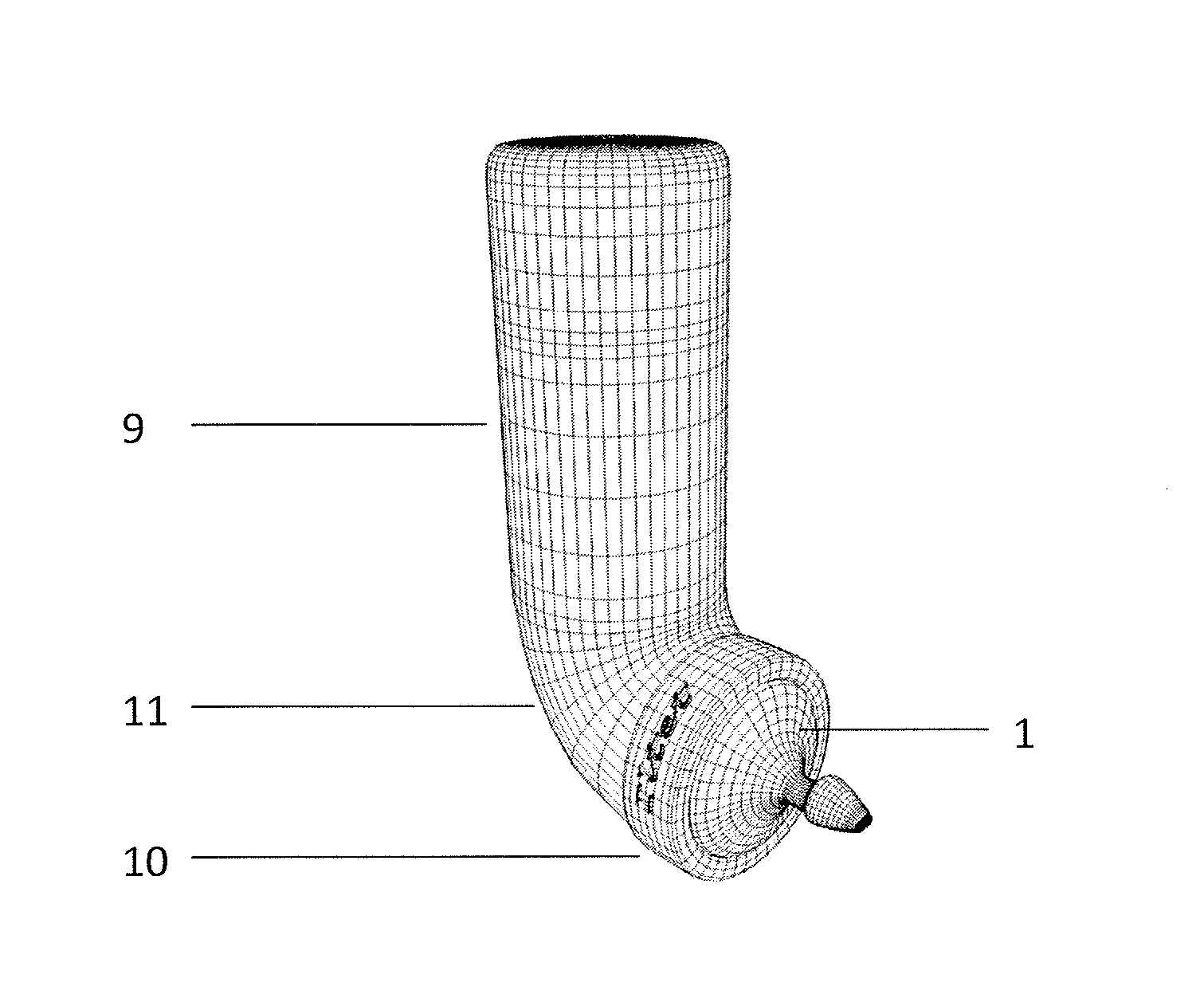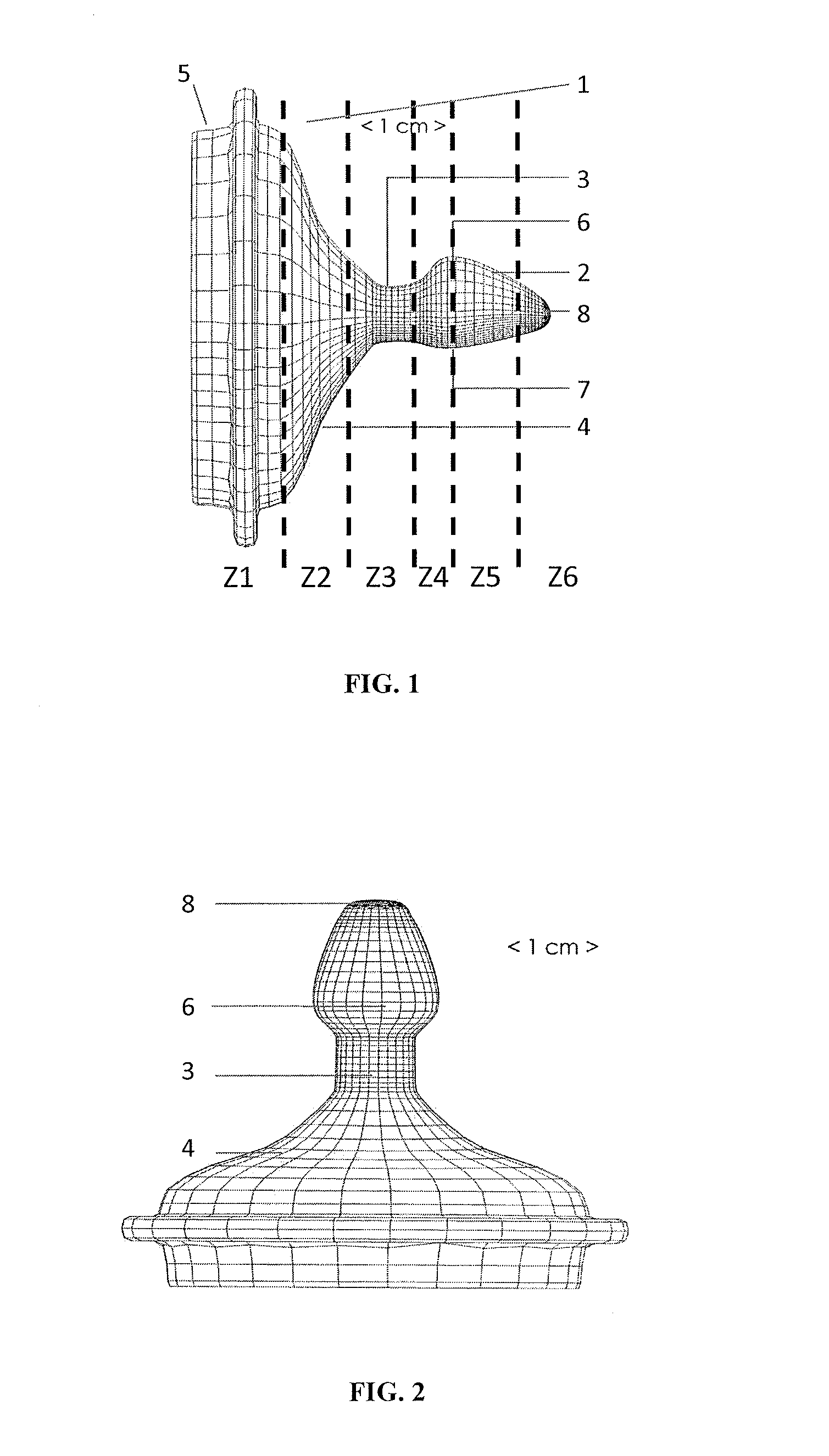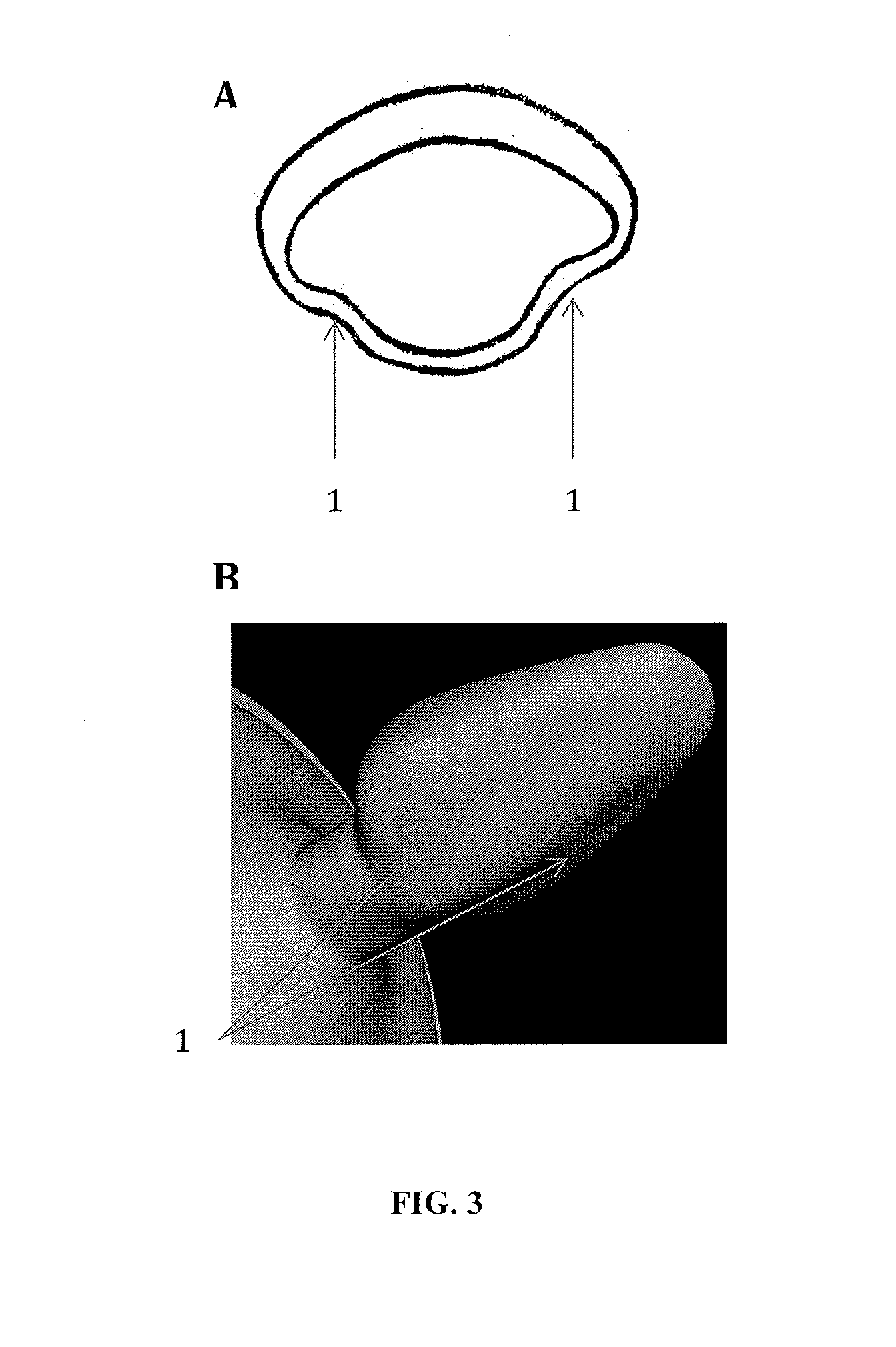Artificial suckling system
a technology of artificial feeding and breast feeding, which is applied in the field of child care, can solve the problems of not being able to faithfully reproduce natural breast feeding action, affecting the quality of breast feeding, and causing deformation of the palate, so as to prevent any tongue irritation and promote correct breast feeding function
- Summary
- Abstract
- Description
- Claims
- Application Information
AI Technical Summary
Benefits of technology
Problems solved by technology
Method used
Image
Examples
Embodiment Construction
[0034]The present invention will be understood more clearly on reading the detailed description hereinafter, which illustrates the invention non-restrictively and should be read with reference to the figures.
[0035]FIG. 1 represents a side profile view of the teat according to the invention.
[0036]FIG. 2 represents a bottom to top profile view of the teat according to the invention.
[0037]FIG. 3 represents a cross-section view (A) or a perspective view (B) of the nipple of the teat according to the invention from the areola to the nipple, showing the lateral concavities.
[0038]FIG. 4A represents a cross-section of the view in FIG. 1 along a vertical axis.
[0039]FIG. 4B represents a cross-section of the view in FIG. 2 along a vertical axis.
[0040]FIG. 5 represents a rear view of the inside of the teat according to the invention, showing a particular embodiment of the means for the controlled expulsion of milk, at the isthmus.
[0041]FIG. 6 represents a cross-section view of the teat accordin...
PUM
 Login to View More
Login to View More Abstract
Description
Claims
Application Information
 Login to View More
Login to View More - R&D
- Intellectual Property
- Life Sciences
- Materials
- Tech Scout
- Unparalleled Data Quality
- Higher Quality Content
- 60% Fewer Hallucinations
Browse by: Latest US Patents, China's latest patents, Technical Efficacy Thesaurus, Application Domain, Technology Topic, Popular Technical Reports.
© 2025 PatSnap. All rights reserved.Legal|Privacy policy|Modern Slavery Act Transparency Statement|Sitemap|About US| Contact US: help@patsnap.com



